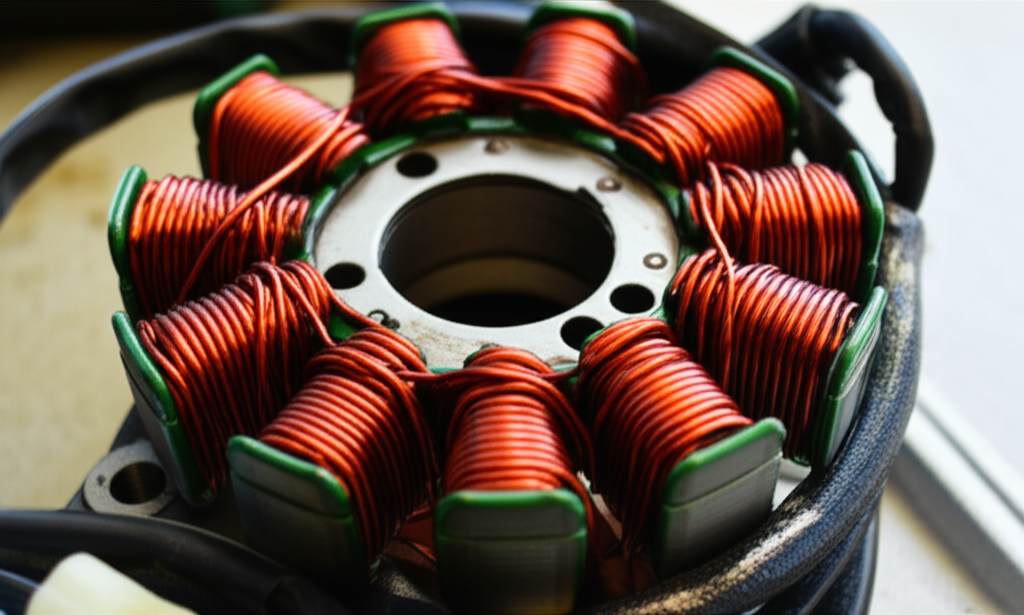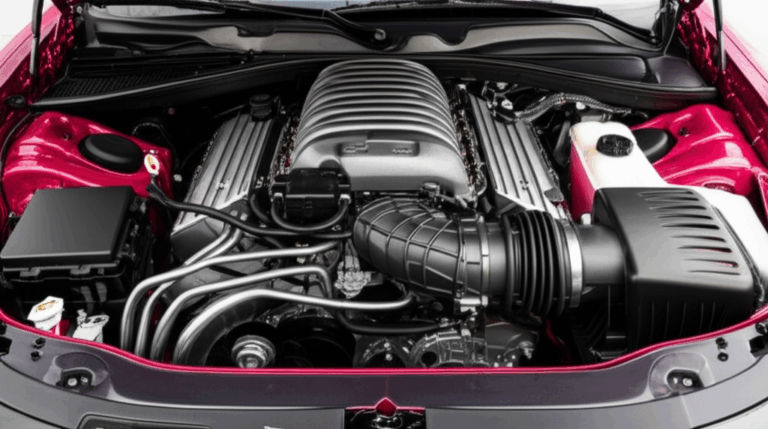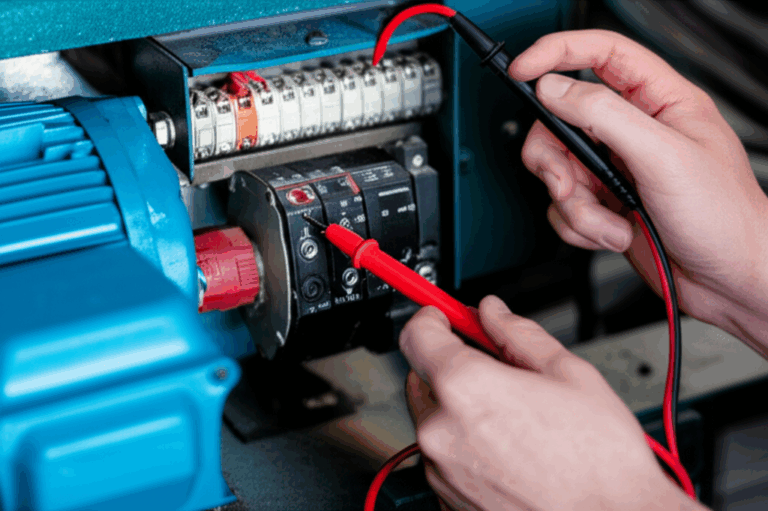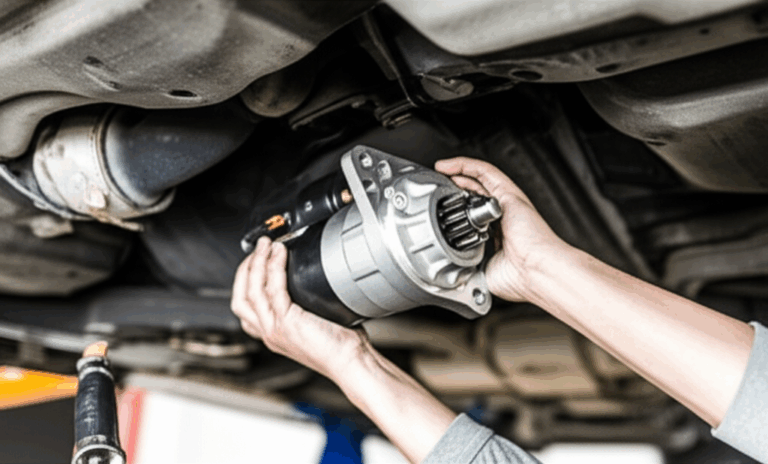
What Does a Bad Stator Sound Like? Your Essential Guide to Recognizing Charging System Failure
Short summary: A bad stator can make your ride whine, buzz, or grind. These sounds often come before a dead battery or a dark dashboard. I’ll show you what to listen for, what to test with a multimeter, and how to fix the problem before it leaves you stuck.
Table of Contents
- Introduction
- What is a stator and why does it matter?
- What does a bad stator sound like?
- Do these sounds change with RPM or by vehicle type?
- What other signs should you watch for?
- Why do stators fail?
- How do you test a stator with a multimeter?
- Could it be the regulator/rectifier or another part?
- Can the rotor or flywheel cause these noises?
- What should you do if you suspect a bad stator?
- How to choose quality parts to prevent whine and buzz
- Simple maintenance to keep your charging system healthy
- A short case study you can use
- FAQ
- Key takeaways
- References
Introduction
You start your motorcycle. You hear a high-pitched hum. Later the lights flicker. The battery light turns on. You feel it in your gut. Something is off in the charging system.
Problem: a failing stator can cause weird sounds and weak power.
Agitate: ignore it and you risk a dead battery, engine stalling, or costly damage.
Solution: learn the sounds, confirm with simple tests, then fix it with the right parts.
I’ve chased that whine on bikes and cars for years. Once you learn the signs, you can spot trouble fast. You can test it with a multimeter. You can choose the right fix before it gets worse.
What is a stator and why does it matter?
The stator is the heart of your charging system. It sits still while the rotor or flywheel spins. The rotor has magnets. The stator has windings made of copper wire around a laminated core. The spinning field makes AC voltage. The regulator rectifier turns it into DC to charge the battery and power the engine and lights.
On a motorcycle, the stator is often a “wet” stator inside the engine. On a car, the stator lives inside the alternator. The job is the same. Make power. Keep voltage steady. Feed the ignition system, the fuel system, and all your accessories.
If the stator fails, you can lose power at low RPM or high RPM. You can see flickering headlights. You can hear stator whine noise or buzzing. You might smell a burning insulation smell. If you catch it early, you can save the regulator/rectifier, the ECU (engine control unit), and other parts.
What does a bad stator sound like?
You often hear the problem before you see it.
- A high-pitched whine or hum: It can sound like a sharp “EEEEEE.” It can rise with RPM. This can happen with electrical vibration in the windings. It can also point to bearings (alternator) if you have a car alternator style unit.
- Grinding or rubbing noise: Harsh and metallic. This hints at contact between flywheel or rotor and the stator. It shows up when windings swell from overheating or when bolts loosen.
- Buzzing or rattling: A “bzzzz” or loose clatter. This can mean loose core parts, a failing rectifier diode, or a poor electrical connector.
- Intermittent or fading sounds: They come and go as parts heat up or cool down. You may only hear it at a certain engine RPM.
If you hear any of these, do not wait. The sound tells you the charging system needs help.
Do these sounds change with RPM or by vehicle type?
Yes. Most sounds change with RPM. A higher engine RPM can make the whine louder. A rub or grind may show up at certain speeds when the rotor shifts or when flywheel clearance gets tight.
- Motorcycles: A motorcycle stator buzzing can come from a wet stator in oil. Oil cools it. Yet oil contamination can damage the insulation over time.
- Cars: In cars the stator sits in the alternator. A bad bearing can make a steady hum or grind.
- ATVs and UTVs: Off-road bumps add vibration. That can loosen mounts and start a rattling noise.
- Generators and small engines: A generator stator sound may be a drone that changes with load. A small engine stator can hum.
- Boat engines: You can hear a boat engine stator noise under the cover as a hum or a buzz.
No matter the ride, strange sounds that track engine speed point to the rotor, stator, or regulator rectifier.
What other signs should you watch for?
Sounds help. Yet other signs often show first. Use this checklist.
Battery charging problems:
- Dead battery symptoms or a weak battery that won’t hold charge
- No charge to battery or undercharging battery
- Overcharging battery that drives voltage too high
- Battery warning light on the dashboard
- Frequent need for jump-starts
Electrical system malfunctions:
- Flickering headlights or dashboard lights erratic
- Gauge cluster malfunction or erratic gauges
- Accessories fail like radio, wipers, or heated grips
- Diagnostic trouble codes and the check engine light
Engine performance issues:
- Engine stalling electrical or misfires from weak spark motorcycle
- Rough idle charging issue and poor engine performance
- Hard starting, slow cranking, or vehicle power loss
Burning smell or visible damage:
- Burning insulation smell or burning plastic smell
- Melted wires stator, discolored stator windings, or hot electrical component
- Oil leak motorcycle stator or leakage at the stator cover
Other clues:
- Intermittent charging problem
- High RPM charging issue or low RPM charging issue
- Dashboard lights dimming
- Unusual engine sounds that rise with speed
- Engine bay noise that feels “electrical”
These signs tell you to test now. Do not guess. Confirm with a meter and a few quick checks.
Why do stators fail?
A stator is tough. Yet it can fail for a few common reasons.
- Overheating: Heat breaks down the insulation on the windings (copper coils). Overheating stator can come from electrical overload damage or a bad heat sink in the regulator rectifier.
- Electrical overload and short circuits: An electrical short, open circuit, or ground fault stator can kill the coils. It may start as a tiny spot. Then it grows fast.
- Physical damage and vibration: Loose mounts or a bent crankshaft can make the flywheel rub. Vibration damage engine and time can crack parts or loosen cooling fins on the stator/regulator.
- Age and wear: Aged electrical components get brittle. Worn out stator windings can fail in old machines.
- Oil contamination: In wet stators, hot oil can break down the varnish on the windings. That can lead to internal winding damage.
- Magnet or rotor issues: Magnet damage rotor or flywheel magnets weakening can stress the stator and change output.
If you catch it early, you can save the regulator/rectifier, fuses / circuit breakers, and other parts. If not, the catastrophic failure risk rises. You risk a preventing roadside breakdown fail.
How do you test a stator with a multimeter?
Grab a multimeter. You will measure voltage, resistance, and continuity. You may also do a voltage drop test, an amperage draw test, and a battery drain test.
1) Battery voltage test
- Engine off: A healthy battery reads about 12.6V or higher.
- Engine running: You should see about 13.5V to 14.5V at the terminals. If it stays low you may have a stator or regulator issue. If it goes too high you may have a bad voltage regulator.
2) Stator output test (AC voltage)
- Unplug the stator from the rectifier/regulator.
- Start the engine.
- Measure AC voltage across each stator phase.
- Compare to the stator output specifications in your service manual. Values should match across phases. The reading should rise with RPM.
3) Resistance/continuity test
- With the engine off, measure the ohms between stator phases.
- Check for continuity to ground. There should be no short to ground.
- Look up the correct stator resistance in the service data.
4) Charging system diagram
- Use the charging system diagram in your manual. Trace the wiring harness, electrical connector, and fuses. Look for breaks, burns, or corrosion.
Here’s a quick guide:
| Test Step | What You Do | Good Result | Bad Result | Next Move |
|---|---|---|---|---|
| Battery voltage (off) | Meter on DC, across battery | ~12.6V+ | <12.2V | Charge with a battery charger, then retest |
| Battery voltage (running) | Meter on DC, at battery | 13.5–14.5V | Low or very high | Check stator AC and regulator/rectifier |
| Stator AC output | Meter on AC, each phase | Even, rises with RPM | Low or uneven | Suspect open circuit stator or shorted windings |
| Resistance between phases | Meter on ohms | Matches spec | Too high/low | Internal winding damage |
| Continuity to ground | Meter to ground | No continuity | Short to ground | Stator needs replacement |
If you find a fault, confirm it twice. Then you know you got it right.
Could it be the regulator/rectifier or another part?
A bad regulator/rectifier can mimic a bad stator. A shorted diode or a weak heat sink can cause overcharging or undercharging. The rectifier diode failure can also make a buzz when it vibrates under load. You can test diodes with a meter in diode mode.
Also check:
- Wiring harness and each electrical connector for heat or green crud
- Fuses / circuit breakers for opens
- Bearings (alternator) if your car has an alternator whine
- Crankshaft position sensor, ignition coil issues, or fuel pump electrical fault if the engine stalls
- Parasitic draw battery if the battery dies overnight
- Engine Control Unit (ECU) if codes point to charging faults
- Diagnostic tool for diagnostic trouble codes tied to voltage
Many times the stator and the regulator fail together. So you should test both. Replace what is bad. Do not guess.
Can the rotor or flywheel cause these noises?
Yes. The spinning parts can rub if clearances change. You can hear:
- Grinding or rubbing noise if the flywheel touches the stator
- A fast humming sound electrical if rotor magnets wobble
- A rattling noise if bolts or keys come loose
If the laminated core of the rotor is not right you can get buzz. The same can happen if the flywheel magnets weakening throws off balance. In those cases, inspect the rotor. You may need new parts like a rotor or a key.
To learn how core quality affects noise and output, see how a precise rotor core lamination and matched stator stack reduce vibration. Good steel and tight stacks can cut hum and heat.
What should you do if you suspect a bad stator?
Problem: you hear noise and see low charge.
Agitate: the lights dim. The bike stalls at a light. You feel stuck.
Solution: take these steps now.
- Confirm the diagnosis: Do not replace parts on a hunch. Do all the tests.
- Seek professional mechanic diagnosis if you are not sure.
- Plan the repair: A stator replacement guide in your service manual shows the steps. A replace stator procedure can be easy on some bikes and hard on others.
- Budget the stator repair cost: Aftermarket can be cheaper. OEM parts can fit best. You may also need gaskets and oil.
- Consider the regulator/rectifier at the same time. It can fail with the stator.
- Act soon: The immediate repair needed warning saves you from long term stator damage and a roadside tow.
You can prevent repeat failure. Fix the root cause. Do not just swap parts.
How to choose quality parts to prevent whine and buzz
The quality of the core and windings matters. Tight stacks and clean steel lower loss. Good varnish fights heat. This reduces electrical overload damage and overheating.
- Stator core: Choose precise steel and tight stacks. The quality of the stator core lamination affects noise and output.
- Motor stacks: Balanced stacks help both AC and BLDC types. You can learn more in this guide on motor core laminations.
- Steel grade: Low-loss steels cut heat at high RPM. See how advanced electrical steel laminations improve efficiency and reduce hum.
If you work with BLDC stator core designs, watch slot shape and tooth width. Match the magnets. Match the laminated core to your rotor. Use the right varnish and bake time. In some builds, silicon steel laminations or crgo lamination core or crngo lamination grades matter. In others, a different stack height helps more.
Good cores and tight windings do not cure a shorted diode or a bad regulator. Yet they reduce heat and buzz. That makes your system last longer.
Simple maintenance to keep your charging system healthy
You can prevent many failures with a few habits.
- Do a charging system health check twice a year.
- Keep all electrical connectors clean and tight.
- Check the wiring harness for rubs and hot spots.
- Keep cooling fins on the regulator clean.
- Use the right oil and change it on time if you have a wet stator. This reduces oil contamination.
- Do not overload your bike with too many heated grips or lights. That can stress the stator.
- Use a smart battery charger when you store the vehicle.
- Replace weak parts before they fail. This keeps your electrical system integrity strong.
If you see signs of impending failure, act now. That includes new unusual engine sounds, intermittent electrical noise, or dashboard lights erratic.
A short case study you can use
I helped a rider with a Yamaha that had a sharp whining or high-pitched hum at mid RPM. The battery light flickered. The bike stalled at idle. We did a quick test.
- Battery off: 12.7V.
- Battery running: 12.1V. Too low.
- Stator AC: One phase was weak and dropped as it warmed.
- Resistance: High on that same phase.
- Continuity: No short to ground.
We found discolored stator windings and a light burnt stator smell under the cover. The regulator rectifier tested good. The fix was a new stator with a better core and windings. We also checked the flywheel for rub and the wiring harness for wear.
I have seen this on Honda, Kawasaki, Suzuki, Harley-Davidson, BMW, and Ducati too. The steps are the same. Listen. Test. Fix the root cause. Use the service manual for specs. If in doubt call a mechanic.
FAQ
Q: What does a bad stator sound like?
A: It can whine, buzz, rattle, or grind. The sound often changes with RPM. A high-pitched hum is common. A grind can mean rotor contact.
Q: How do I know if the stator or the regulator is bad?
A: Test both. Check battery voltage. Check stator AC output. Check resistance and continuity. Then test the regulator/rectifier diodes. Do not guess.
Q: Can a bad stator cause engine stall?
A: Yes. Low charge can starve the ignition system and fuel system. You may see engine stalling electrical and a rough idle.
Q: Can I drive with a bad stator?
A: Not for long. The battery will drain. You risk a breakdown. Fix it soon.
Q: Should I get OEM or aftermarket parts?
A: Both can work. OEM parts often fit best. Aftermarket parts may save cost. Choose quality. Follow the stator replacement guide and specs.
Sounds, causes, and fixes at a glance
| Sound | Likely Cause | What It Means | What To Check | Fix |
|---|---|---|---|---|
| High-pitched whine/hum | Electrical vibration or bearing hum | Early warning | Stator AC output, bearings, regulator | Replace bad part, check core quality |
| Grinding/scraping | Rotor/flywheel rubbing stator | Physical damage | Cover off visual check, flywheel clearance | Reset mounts, replace stator or rotor |
| Buzzing/rattling | Loose core or diode buzz | Intermittent fault | Rectifier diodes, harness, connectors | Repair or replace R/R, tighten mounts |
| Intermittent noise | Heat growth or loose mount | Progressive failure | Tests hot vs cold, vibration check | Replace weak parts, secure hardware |
Quick look at common data points
| Feature/Aspect | Typical Observations | What You Should Do |
|---|---|---|
| Primary cause | Overheating and shorts | Watch load, keep parts cool |
| R/R involvement | Often fails with stator | Test both, replace as needed |
| Repair costs | Motorcycle stator $100–$800+ parts | Budget for gaskets and fluids |
| Delay risk | Battery drain, roadside breakdown | Fix early to avoid larger costs |
Full symptom and keyword checklist you can use
Use this list to match what you hear and see. It also doubles as a study guide so you can talk to your mechanic with the right words.
- stator whine noise
- grinding sound from engine
- alternator stator symptoms
- motorcycle stator buzzing
- rattling noise charging system
- humming sound electrical
- stator failure sounds
- burnt stator smell
- dead battery symptoms
- flickering headlights
- battery warning light on
- engine stalling electrical
- weak spark motorcycle
- hard starting issue
- no charge to battery
- overcharging battery
- undercharging battery
- rectifier regulator noise
- how to test stator
- multimeter stator test
- AC voltage stator output
- resistance test stator
- continuity test windings
- open circuit stator
- shorted stator windings
- ground fault stator
- visual inspection stator
- melted wires stator
- discolored stator windings
- oil leak motorcycle stator
- stator repair cost
- replace stator procedure
- causes of stator failure
- overheating stator
- electrical overload damage
- vibration damage engine
- worn out stator
- aged electrical components
- magnet damage rotor
- flywheel clearance noise
- rough idle charging issue
- poor engine performance
- vehicle power loss
- dashboard lights erratic
- gauge cluster malfunction
- burning insulation smell
- hot electrical component
- generator stator sound
- ATV stator problems
- boat engine stator noise
- small engine stator symptoms
- voltage drop test
- amperage draw test
- battery drain test
- charging system diagram
- electrical diagnostic steps
- prevent stator burnout
- quality aftermarket stator
- OEM stator replacement
- professional mechanic diagnosis
- DIY stator replacement
- common stator issues
- troubleshooting charging system
- internal winding damage
- stator core damage
- rectifier diode failure
- voltage regulator issues
- flywheel magnets weakening
- crankshaft sensor related
- ignition coil issues
- fuel pump electrical fault
- parasitic draw battery
- high RPM charging issue
- low RPM charging issue
- intermittent charging problem
- unusual engine sounds
- electrical system troubleshooting
- diagnostic trouble codes
- electrical system health
- stator output specifications
- correct stator resistance
- stator testing tools
- common vehicle failures
- motorcycle electrical problems
- car charging system failure
- generator no power output
- stator replacement guide
- long term stator damage
- immediate repair needed
- catastrophic failure risk
- preventing roadside breakdown
- importance of maintenance
- electrical system overhaul
- component lifespan stator
- signs of impending failure
- intermittent electrical noise
- sound changes with RPM
- engine bay noise
- charging system health check
- electrical system integrity
And the core entities you will see in manuals and parts lists:
- Stator
- Alternator
- Regulator Rectifier
- Battery
- Engine
- Charging System
- Rotor
- Flywheel
- Windings (Copper Coils)
- Magnets
- Multimeter
- Voltage
- Resistance
- Continuity
- Amperage
- Battery Light (Dashboard)
- Check Engine Light
- Motorcycle
- Car
- ATV
- UTV
- Generator
- Yamaha
- Honda
- Kawasaki
- Harley-Davidson
- Suzuki
- BMW
- Ducati
- Electrical Short
- Open Circuit
- Ground Fault
- Overheating
- Vibration
- Oil Contamination
- Copper Wire
- Laminated Core
- Crankshaft
- Ignition System
- Fuel System
- Diagnostic Tool
- Mechanic
- OEM Parts
- Aftermarket Parts
- Service Manual
- Battery Charger
- Fuses / Circuit Breakers
- Bearings (Alternator)
- Diode (Rectifier component)
- Cooling Fins (Stator/Regulator)
- Wiring Harness
- Electrical Connector
- Heat Sink (on regulator)
- Engine Control Unit (ECU)
Positioning quality as your solution
Problem: bad cores and poor windings add heat and noise.
Agitate: hum grows to a loud whine. The battery dies at night.
Solution: choose tight stacks, good steel, and solid windings.
If you want a deep dive on the stator stack itself, study high-precision stator core lamination. You can also look at whole system design with balanced motor core laminations that fit your rotor. Materials matter too. Low-loss electrical steel laminations reduce heat and lower hum at high RPM.
These choices help you meet the need for a quiet and strong charging system. They also position your upgrade as a long-term fix. You cut “do it twice” risk. You raise electrical system health and integrity.
Key takeaways
- Listen for a high-pitched whine, buzz, rattle, or grind that tracks RPM.
- Check the battery voltage with the engine off and running.
- Measure stator AC output, resistance, and continuity to ground.
- Test the regulator/rectifier. Do not guess.
- Inspect wiring, connectors, fuses, and bearings.
- Replace bad parts fast to avoid larger damage.
- Choose quality laminated cores and tight windings to reduce heat and noise.
- Follow the service manual for specs and steps.
- Keep connectors clean and cooling fins open.
- Do regular health checks to prevent breakdowns.
References
- Yamaha, Honda, Kawasaki, Suzuki, BMW, Ducati, and Harley-Davidson official Service Manuals.
- Bosch Automotive Handbook, Electrical Systems chapters.
- Standard Motor Products technical bulletins on charging system diagnosis.
- Motorcycle and automotive industry repair guides on stator and regulator testing.
- OEM and aftermarket regulator/rectifier datasheets for diode and heat sink specs.
About core quality and the big picture
If you want to understand how the stator and rotor work together, it helps to learn how the steel stacks shape the field. A matched rotor and stator reduce hum. Careful lamination stacks lower eddy losses. This keeps the system cool and quiet. For a broad overview of lamination stacks used in motors and energy systems, review advanced manufacturing at core lamination stacks.








